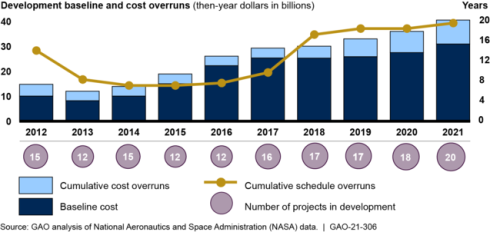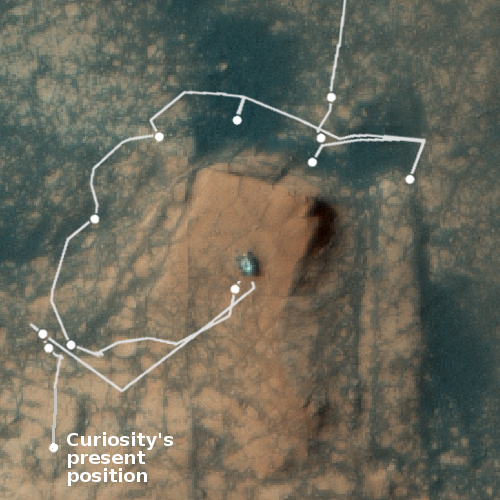Tiny object hits robot arm on ISS
According to the Canadian Space Agency, a very small piece of space debris hit that country’s robot arm on ISS at some point in the recent past, producing a hole about 5mm wide, or about 1/5th of an inch in diameter.
During a routine inspection on May 12 robotic operators observed the hole in the boom section of the Canadarm2. After working with NASA to take detailed images of the impact, the agencies concluded the hole is about 5mm in diameter.
The damage is limited to a small section of the arm boom and thermal blanket. CSA says despite the impact, the arm’s performance is unaffected.
While space junk is a concern, this story is not about that, even if the authorities at CSA are hyping it, and as usual the mainstream press (as indicated by the article at the link) is buying into the propaganda. Space stations like ISS and Mir are routinely hit by micrometeorites. Though most impacts are much much smaller than the object that produced this hole and do no significant harm, hits like this one have happened in the past.
However, almost all such impacts are from natural objects from space. In fact, as far as I know, tiny holes this size are always caused by natural objects (with the one exception of the hole someone in Russia accidently drilled into the hull of one Soyuz spacecraft). Yet, the officials at Canada’s space agency immediately used the discovery to lobby for action against human-made space junk, even though they also admit they have no evidence this hole was produced by space junk, and past evidence strongly suggests it was not junk.
The real story here is whether the hulls on ISS’s various modules are sufficiently robust to withstand such somewhat expected and not-so-unusual natural impacts. And based on the station’s survival without any issue now for almost a quarter century, it appears that its shielding is sufficient, and will likely work for any long term mission to Mars or beyond. In fact, that the impact did no significant harm to the robot arm, which has been operating without stop, is further proof of that good design.
This is not to say that natural objects aren’t a threat. The data just shows that the threat from really dangerous objects large enough to do real harm is very very rare, to the point that, from a cost-benefit perspective, it makes little sense to protect against them. Future interplanetary space stations can rely on the hull shielding designs now used with some confidence.
As for space junk, that certainly is a problem that must be addressed. It just isn’t what this story is really about.
According to the Canadian Space Agency, a very small piece of space debris hit that country’s robot arm on ISS at some point in the recent past, producing a hole about 5mm wide, or about 1/5th of an inch in diameter.
During a routine inspection on May 12 robotic operators observed the hole in the boom section of the Canadarm2. After working with NASA to take detailed images of the impact, the agencies concluded the hole is about 5mm in diameter.
The damage is limited to a small section of the arm boom and thermal blanket. CSA says despite the impact, the arm’s performance is unaffected.
While space junk is a concern, this story is not about that, even if the authorities at CSA are hyping it, and as usual the mainstream press (as indicated by the article at the link) is buying into the propaganda. Space stations like ISS and Mir are routinely hit by micrometeorites. Though most impacts are much much smaller than the object that produced this hole and do no significant harm, hits like this one have happened in the past.
However, almost all such impacts are from natural objects from space. In fact, as far as I know, tiny holes this size are always caused by natural objects (with the one exception of the hole someone in Russia accidently drilled into the hull of one Soyuz spacecraft). Yet, the officials at Canada’s space agency immediately used the discovery to lobby for action against human-made space junk, even though they also admit they have no evidence this hole was produced by space junk, and past evidence strongly suggests it was not junk.
The real story here is whether the hulls on ISS’s various modules are sufficiently robust to withstand such somewhat expected and not-so-unusual natural impacts. And based on the station’s survival without any issue now for almost a quarter century, it appears that its shielding is sufficient, and will likely work for any long term mission to Mars or beyond. In fact, that the impact did no significant harm to the robot arm, which has been operating without stop, is further proof of that good design.
This is not to say that natural objects aren’t a threat. The data just shows that the threat from really dangerous objects large enough to do real harm is very very rare, to the point that, from a cost-benefit perspective, it makes little sense to protect against them. Future interplanetary space stations can rely on the hull shielding designs now used with some confidence.
As for space junk, that certainly is a problem that must be addressed. It just isn’t what this story is really about.











